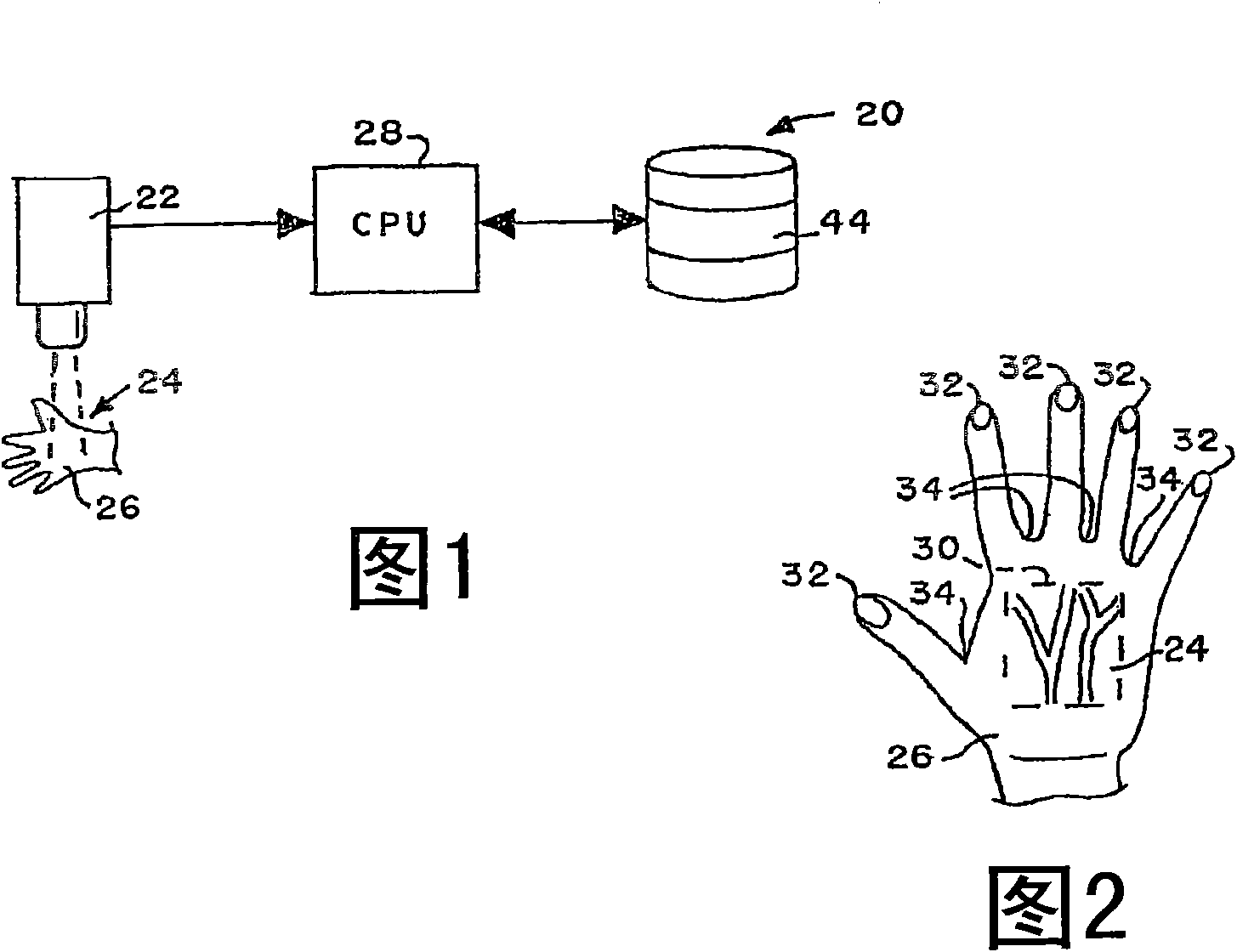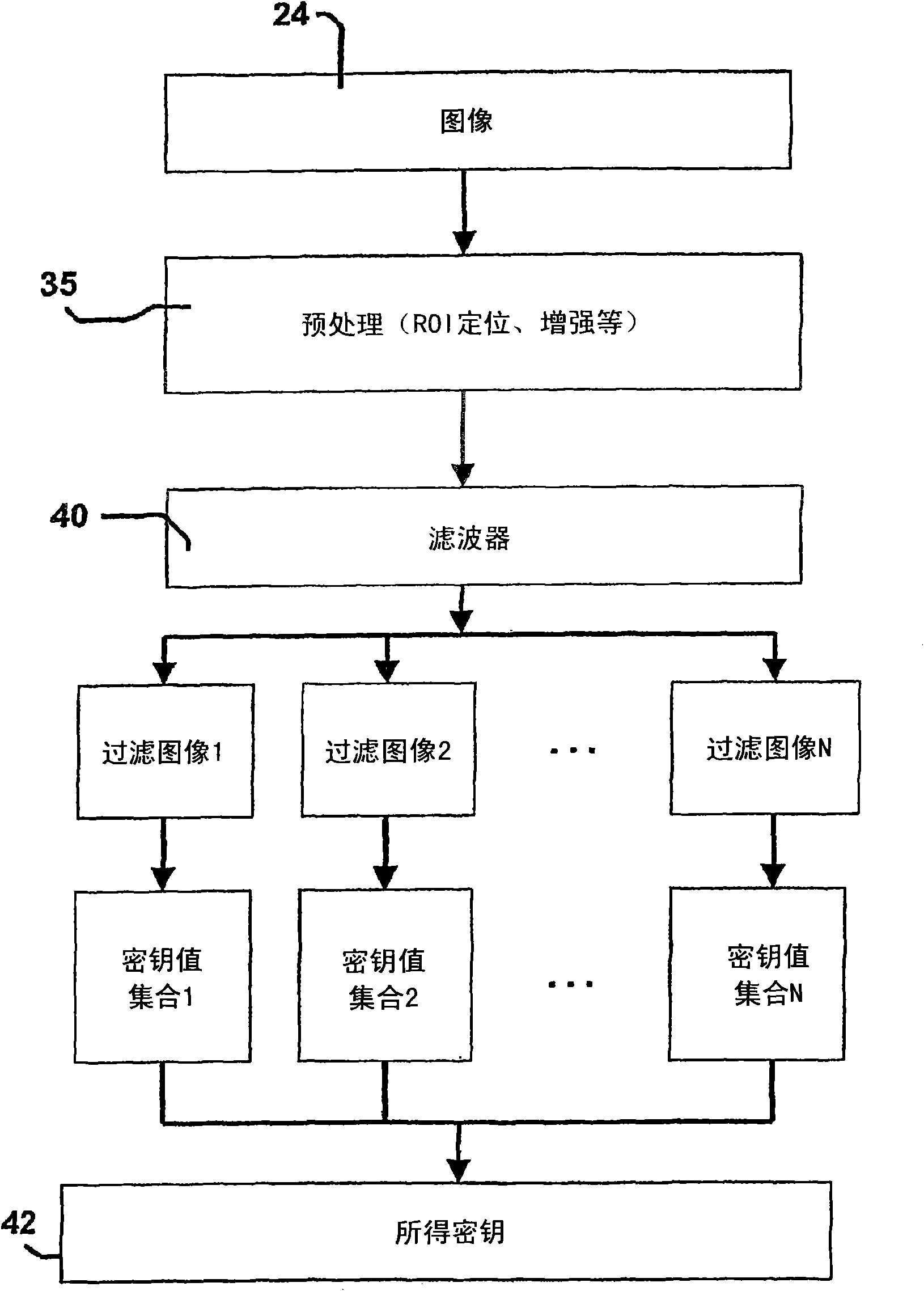Method and apparatus for extraction and matching of biometric detail
A biometric and detailed technology, applied in the field of biometric information identification of individuals, can solve the problems of difficulty in using databases, complicated matching processes, and inability to construct uniformly sorted fixed-length keys, etc., and achieve a simple and rapid matching process. Effect
- Summary
- Abstract
- Description
- Claims
- Application Information
AI Technical Summary
Problems solved by technology
Method used
Image
Examples
Embodiment Construction
[2000] It is well known in the art that skin and some other body tissues reflect infrared light in the near-infrared range of approximately 700 to 900 nanometers, while blood absorbs radiation in this range. Thus, in video images of body tissue captured under infrared illumination, blood vessels appear as dark lines against the brighter background of the surrounding flesh. However, due to the reflective nature of subcutaneous fat, blood vessels that lie beneath large accumulations of this fat may be difficult or impossible to see when illuminated with direct light, that is, light that arrives from roughly a single direction.
[2010] When imaging regions of body tissue in the near-infrared range under highly diffuse infrared illumination, the contrast between blood vessels and surrounding flesh is significantly higher than when the tissue is viewed under direct infrared illumination. It appears that most of the diffuse infrared light reflected by the subcutaneous fat is direct...
PUM
 Login to View More
Login to View More Abstract
Description
Claims
Application Information
 Login to View More
Login to View More - R&D
- Intellectual Property
- Life Sciences
- Materials
- Tech Scout
- Unparalleled Data Quality
- Higher Quality Content
- 60% Fewer Hallucinations
Browse by: Latest US Patents, China's latest patents, Technical Efficacy Thesaurus, Application Domain, Technology Topic, Popular Technical Reports.
© 2025 PatSnap. All rights reserved.Legal|Privacy policy|Modern Slavery Act Transparency Statement|Sitemap|About US| Contact US: help@patsnap.com



